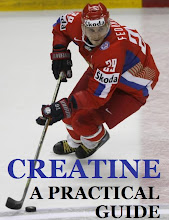
THE REFERENCE DAILY INTAKES.
To help you determine whether you are getting the right balance of these nutrients, the government has established the Reference Daily Intakes (RDIs) as a standard for nutrient intake. Their recommendations for protein, vitamins, and minerals exceed the average nutritional requirements to meet the needs of nearly all people, including athletes (see table 1.1).
In the following posts you will learn how to eat a high-energy. healthful combination of foods that provides the daily requirement of these important nutrients and promotes your health and fitness.
THREE BASIC KEYS TO HEALTHFUL EATING
When choosing your meals and snacks, try to base your nutrition game plan on these three important keys to healthful eating:
1. Variety. There is no one magic food. Each food offers special nutrients. For example, oranges provide vitamin C and carbohydrates but not iron or protein. Beef offers iron and protein but not vitamin C or carbohydrates. You’ll thrive best by eating a variety of foods.
I often counsel athletes who severely restrict their diets. One runner, for example, limited herself to plain yogurt, rice cakes, and oranges. Besides lacking variety, her diet lacked iron, zinc, vitamins A, E, K, and much more.
2. Moderation. Even soda pop and chips, in moderation, can fit into a well-balanced diet. Simply balance out refined sugars and fats with nutrient-wise choices at your next meal. For example, compensate for a greasy sausage and biscuit at breakfast by selecting a low-fat turkey sandwich for lunch. Although no one food is a junk food, too many nutrient poor selections can accumulate into a junk food diet.
3. Wholesomeness. Choose natural or lightly processed foods as often as possible. For instance, choose whole wheat rather than white bread, apples rather than apple juice, baked potatoes rather than potato chips. Natural foods usually have more nutritional value and fewer questionable additives.
Table 1.1 Reference Daily intake.
The Reference Daily Intakes (RDIs) are not requirements but rather an
estimate of safe and adequate nutrient intakes for proteins, vitamins,
and minerals that will maintain good health for almost all people. The
values are designed for the age group with the highest needs. For
example, the RDI for iron is based on a woman's need and is a number
overly generous for men. You should try to meet the RDIs on a daily basis. If your daily nutrient intake varies, but your average weekly intake meets the allowances, you are unlikely to suffer from nutritional deficiencies.
The Daily Values expressed in percentages of the RDIs on the nutrition facts on food labels are based on the following intakes:















